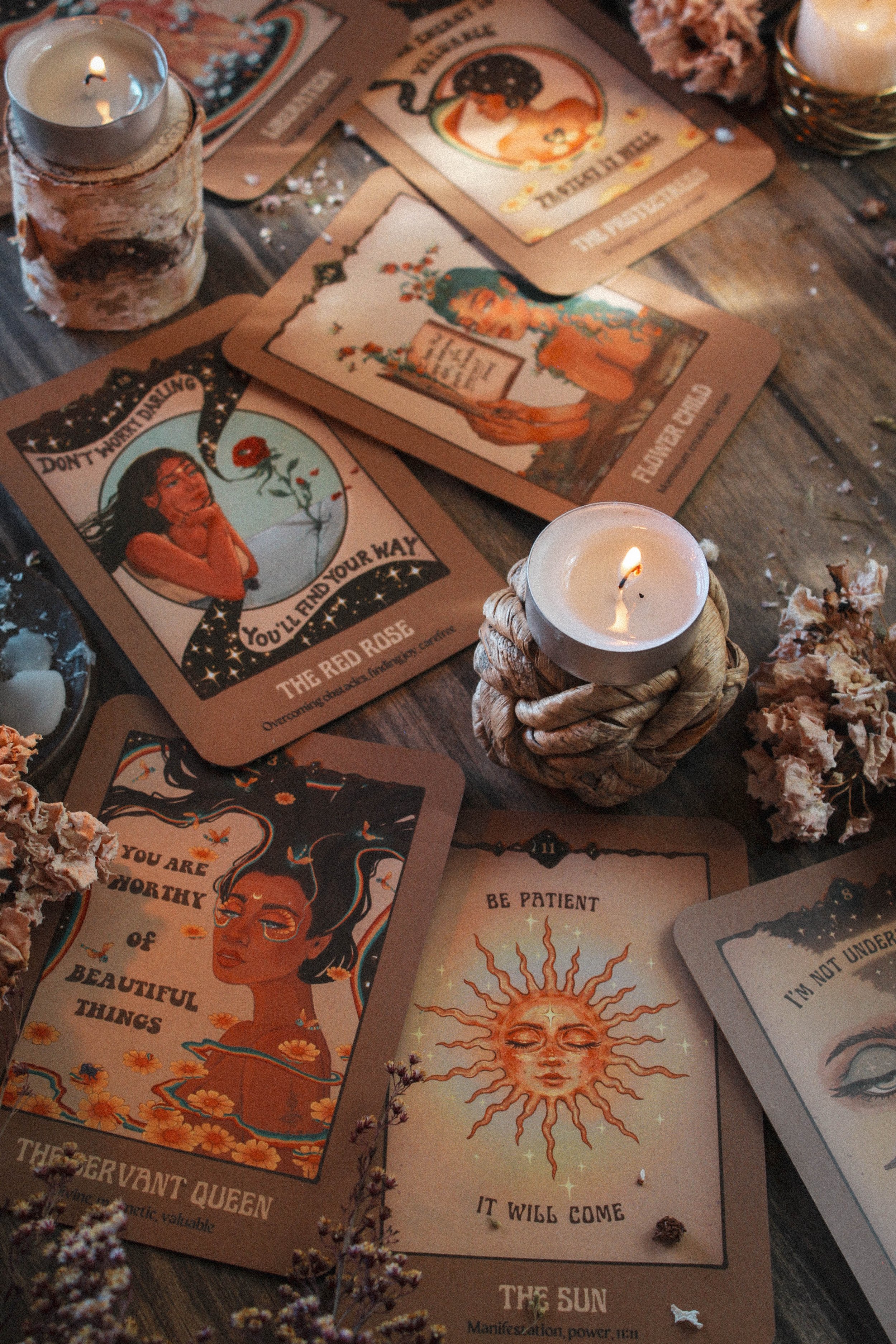Tarot Cards vs. Oracle Cards. Which One Is For You?
This page may contain affiliate links which may allow us to collect a commission when you click and make a purchase through the links on our site. There is no additional cost to you for doing so.
Tarot and oracle decks each have their own unique charm and methodology. While both serve as gateways to your subconscious, there are subtle differences which could inform the system that is right for you, especially as a beginner. In this post, let's delve into the intriguing world of tarot cards and oracle cards, how these systems differ from each other, and which one may be the right one for you.
Tarot Cards: Defined Symbols and Archetypes
Many might believe tarot was invented with the Rider-Waite System, created early in the last century, but tarot cards are a much older practice, deeply embedded in centuries of esoteric wisdom. There are traditionally 78 cards although contemporary decks will often include extras, divided into two main categories—Major Arcana and Minor Arcana. Each card carries its own symbolism and meaning, depicting various aspects of life's journey, spiritual growth, and human experiences.
The Major Arcana comprises 22 cards (unless the creator chooses to add more), representing significant life events and archetypal forces. These cards delve into the profound and transformative aspects of existence. The Minor Arcana, on the other hand, consists of 56 cards, divided into four suits—Cups, Pentacles, Swords, and Wands. These suits mirror everyday situations, emotions, challenges, and the elements. You may find modern decks often rename the suits. Most recently, I received an advanced copy of the Bee Tarot which appropriately renamed cups as Jars to represent jars of honey.
Tarot cards are much more structured in general than oracle cards and readers often undergo extensive study to master the complexities of tarot symbolism and interpretation. Fortunately, the skills you learn reading tarot are almost always transferable to oracle cards.
Oracle Cards: Versatile Wisdom
In contrast, oracle cards bring a more fluid and intuitive approach to divination. These cards are not bound by a standardized system like tarot but instead embrace a wide range of themes, imagery, and messages. Oracle decks can vary greatly in size, containing anywhere from 30 to 100 cards or more.
Oracle cards offer a more flexible reading experience. They cover an extensive array of topics, from the occult to Christianity, angels and animals, nature and mythical realms to the Wheel of the Year like my decks—Seasons of the Witch Oracle Series. The diversity of oracle cards allows you to choose a deck that resonates with your unique preferences and spiritual inclinations. Tarot cards also feature a wide variety of themes like Yuletide Tarot, Ghosts & Spirits Tarot or Tarot of the Vampires, but you will find the meanings, unlike oracle cards, are mostly unchanged.
Oracle cards tend to focus on broader themes, providing guidance, encouragement, and gentle nudges towards self-reflection. The absence of a strict structure allows for a more open-ended and personalized interpretation. Beginners often find oracle cards are more accessible, requiring much less study and understanding than tarot.
Which is right for you?
Choosing tarot or oracle cards is a deeply personal choice. You can also choose to use both, like I do in my practice. Both tarot and oracle cards share the common goal of guiding you on your spiritual journey, offering clarity, inspiration, and self-discovery. In truth, the gap between tarot and oracle cards narrows by the day and I suspect there will be some kind of combination sometime in the next 5-10 years.
Download my free Discover Your Divination Path Quiz to see which practice may be right for you.
But for now, combining tarot and oracle cards can add additional layers of insight in an infinite amount of ways. If you’re just beginning your tarot and oracle reading journey or wish to learn more about tarot/oracle in general, be sure to check out my membership–The Spirt Realm. Here, I share my tips and tricks for developing your skills as a tarot reader as well as tips for astrology, ritual potion making and seasonal living.
Xoxo, Lorriane








